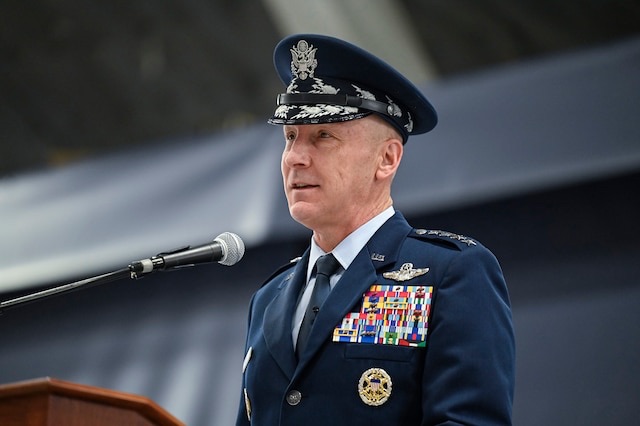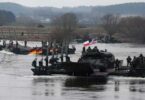BY: Joseph Clark
WASHINGTON DC: The Air Force is at a critical inflection point as it adapts to the changing character of warfare, its top general said today.
Air Force Chief of Staff Gen. David W. Allvin said deterring conflict in the emerging era of great power competition while maintaining capabilities to win against legacy threats calls for bold decisions and a commitment to adaptation.
“I do believe this is a time of consequence,” Allvin said during a discussion on optimizing air power hosted by the Brookings Institution, a Washington-based public policy organization.
“We may not see it because there’s distractions and there’s complexity in the environment right now,” he added. “But we’ve had that before. Those who were able to pierce the fog, look through that and be able to see into the future with some courage and make the bold decisions now, in this time of consequence, will look back in at ourselves and be proud.”
Allvin’s remarks follow sweeping changes, announced by the Air Force earlier this month, to reoptimize the service to meet the demands of the future.
Those changes included key decisions by the service that focus on developing people, generating readiness, projecting power and developing capabilities to maintain superiority in an era of great-power competition.
The decisions, endorsed by the Air Force’s most senior civilian and military leaders, outline both near- and long-term initiatives that emphasize speed and agility to prevail against near-peer competitors.
“We are moving forward with a sense of urgency to ensure we are ready to deter and, if necessary, win,” Air Force Secretary Frank Kendall said when he unveiled the blueprint.
“We are out of time,” he said, underscoring the imperative for reoptimizing for the new environment.
Discussing the way forward today, Allvin said the Air Force must be capable of operating in more contested environments and at increasing ranges.
That will require more agile force deployment while being able to integrate with joint and combined forces to have the greatest combat effect, he said.
“That’s a different way of warfighting,” he said, adding that it will require not only organizational change and new capabilities, but also a change in mindset for airmen.
“It’s really about adapting our institution to be able to be more conducive for the environment, which is more fast paced, rapid, where opportunities come and go faster,” he said. “You can’t be operating at a 20th century, bureaucratic pace when you have a 21st century dynamic environment.”







